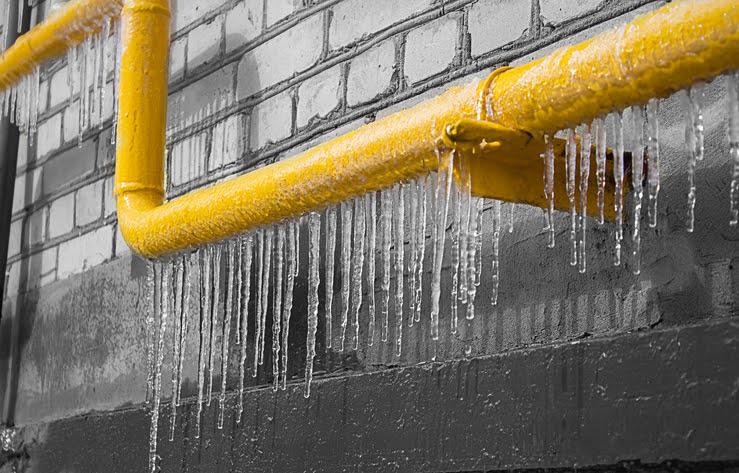Have you been searching for information and facts involving Prevent Frozen Pipes ?

Cold weather can ruin your plumbing, especially by freezing pipes. Below's exactly how to stop it from occurring and what to do if it does.
Intro
As temperatures decline, the danger of frozen pipes rises, potentially leading to costly repairs and water damages. Comprehending exactly how to avoid frozen pipes is important for homeowners in cool environments.
Comprehending Icy Pipelines
What causes pipelines to ice up?
Pipelines freeze when revealed to temperature levels listed below 32 ° F (0 ° C) for expanded durations. As water inside the pipes freezes, it broadens, taxing the pipeline wall surfaces and potentially causing them to burst.
Risks and damages
Icy pipelines can cause water system disruptions, residential or commercial property damage, and costly repairs. Burst pipes can flooding homes and cause extensive architectural damage.
Indicators of Frozen Pipes
Determining frozen pipelines early can avoid them from breaking.
Just how to recognize icy pipelines
Seek lowered water circulation from taps, uncommon smells or noises from pipes, and visible frost on subjected pipelines.
Prevention Tips
Protecting at risk pipes
Cover pipes in insulation sleeves or use warm tape to shield them from freezing temperatures. Concentrate on pipelines in unheated or external locations of the home.
Home heating techniques
Keep interior areas properly warmed, specifically locations with pipes. Open cupboard doors to allow warm air to flow around pipelines under sinks.
Shielding Exterior Plumbing
Garden tubes and exterior faucets
Disconnect and drain pipes yard hose pipes prior to winter season. Set up frost-proof faucets or cover outside taps with protected caps.
What to Do If Your Pipes Freeze
Immediate actions to take
If you believe frozen pipelines, maintain faucets available to relieve pressure as the ice melts. Utilize a hairdryer or towels soaked in hot water to thaw pipes slowly.
Long-Term Solutions
Structural adjustments
Consider rerouting pipelines away from exterior wall surfaces or unheated locations. Add extra insulation to attic rooms, basements, and crawl spaces.
Upgrading insulation
Invest in top notch insulation for pipes, attic rooms, and wall surfaces. Correct insulation assists maintain consistent temperature levels and minimizes the risk of frozen pipelines.
Verdict
Preventing icy pipelines needs aggressive actions and fast responses. By comprehending the causes, indicators, and safety nets, homeowners can safeguard their pipes during cold weather.
5 Ways to Prevent Frozen Pipes
Drain Outdoor Faucets and Disconnect Hoses
First, close the shut-off valve that controls the flow of water in the pipe to your outdoor faucet. Then, head outside to disconnect and drain your hose and open the outdoor faucet to allow the water to completely drain out of the line. Turn off the faucet when done. Finally, head back to the shut-off valve and drain the remaining water inside the pipe into a bucket or container. Additionally, if you have a home irrigation system, you should consider hiring an expert to clear the system of water each year.
Insulate Pipes
One of the best and most cost-effective methods for preventing frozen water pipes is to wrap your pipes with insulation. This is especially important for areas in your home that aren’t exposed to heat, such as an attic. We suggest using foam sleeves, which can typically be found at your local hardware store.
Keep Heat Running at 65
Your pipes are located inside your walls, and the temperature there is much colder than the rest of the house. To prevent your pipes from freezing, The Insurance Information Institute suggests that you keep your home heated to at least 65 degrees, even when traveling. You may want to invest in smart devices that can keep an eye on the temperature in your home while you’re away.
Leave Water Dripping
Moving water — even a small trickle — can prevent ice from forming inside your pipes. When freezing temps are imminent, start a drip of water from all faucets that serve exposed pipes. Leaving a few faucets running will also help relieve pressure inside the pipes and help prevent a rupture if the water inside freezes.
Open Cupboard Doors
Warm your kitchen and bathroom pipes by opening cupboards and vanities. You should also leave your interior doors ajar to help warm air circulate evenly throughout your home.

As an enthusiastic person who reads about Preventing and dealing with frozen pipes, I thought sharing that piece of content was a good thing. Are you aware of anybody else who is looking into How to prepare your home plumbing for winter weather? Why not share it. Thank-you for going through it.
Estimate
Comments on “Important Advice to Prevent Frozen Plumbing in Winter: Expert Insights”